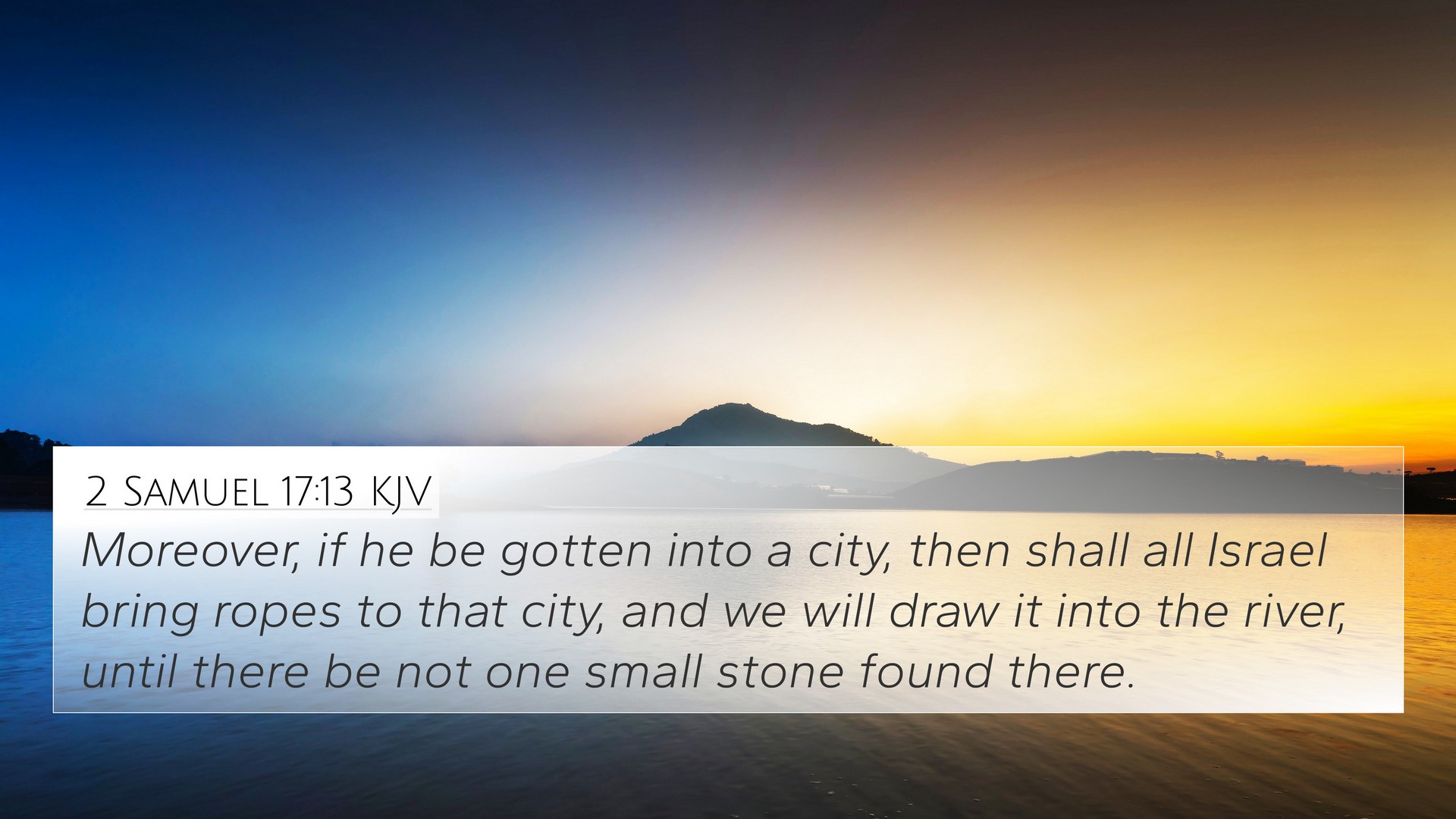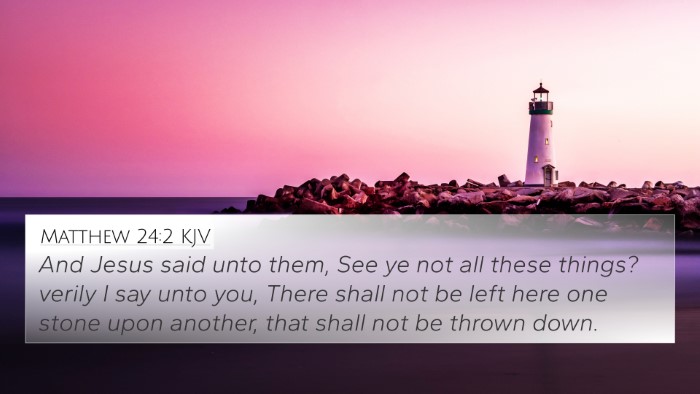Understanding 2 Samuel 17:13
Overview of the Verse: 2 Samuel 17:13 states, "And if he be gotten into a city, then shall all Israel bring ropes to that city, and we will draw it into the river." This verse reflects a strategic counsel given in the turbulent context of Absalom's rebellion against King David. It highlights themes of war strategy, loyalty, and the dire consequences of division.
Insights from Commentaries
This verse can be better understood by examining the insights provided by prominent Biblical commentators.
-
Matthew Henry:
Henry emphasizes the cunning strategy employed by Ahithophel, advising that capturing David would neutralize the threat to Absalom. He interprets the advice as illustrating the seriousness of the conflict and offers a metaphorical understanding of the "drawing into the river," suggesting a complete takeover and annihilation of opposition.
-
Albert Barnes:
Barnes focuses on the concept of siege warfare demonstrated in this verse. He elaborates on the idea that should David take refuge in a fortified city, a collective effort would be necessary to overtake it. This illustrates the alliances and collective efforts in times of conflict, reinforcing the theme of unity in warfare.
-
Adam Clarke:
Clarke points out the desperation and aggression in the advice. He notes that it reflects the lengths to which Absalom's forces would go to eliminate David. Clarke also provides historical context, suggesting the likelihood of Absalom's defeat should they not capture David swiftly.
Thematic Connections
Connecting Themes: This verse opens discussions on various larger themes throughout the Bible, including the struggle for power, the effects of betrayal, and divine providence in tumultuous times.
Cross-References and Related Verses
Understanding 2 Samuel 17:13 can also be enhanced by examining related verses, which demonstrate the inter-Biblical dialogue surrounding themes of conflict and loyalty:
- 2 Samuel 15:10: Reflects Absalom's deception in winning the hearts of Israel.
- 2 Samuel 16:11-12: Highlights David's suffering and wrongs as he flees from Absalom.
- 1 Kings 2:5-6: Discusses political intrigue and consequences following David's reign.
- Psalms 3:1-2: David's lament during the rebellion, expressing his fears and trust in God.
- Psalms 7:1-2: A cry for help against unjust aggressors, relating to David's situation.
- Matthew 26:56: Refers to the abandonment and betrayal of Jesus' followers, echoing themes from David's tale.
- Luke 22:53: Jesus speaks of the power of darkness during his betrayal, paralleling David's evils.
Conclusion: The Impact of 2 Samuel 17:13
2 Samuel 17:13 serves not only as a historical recount but also as a poignant reflection of the human condition. In its portrayal of conflict and loyalty, it resonates with many other Biblical narratives, allowing the reader to explore the profound implications found throughout scripture.
Utilizing Bible Cross-References
To fully grasp the gravity of scripture like 2 Samuel 17:13, it’s beneficial to employ various tools for cross-referencing. The use of a Bible concordance or a comprehensive Bible cross-reference guide can uncover more connections and insights:
- Using Bible concordance to find themes related to leadership and rebellion.
- Implementing cross-reference Bible study as a means to dive deeper into contextual connections.
- Exploring inter-Biblical dialogue regarding conflict resolution.
Broader Applications
The reflections in this verse encourage readers to delve into personal and communal struggles, drawing parallels between past and present challenges. Such cross-referenced biblical study methods pave the way for deeper understanding and application of God’s Word in everyday life.
Final Thoughts
2 Samuel 17:13 stands as a pivotal moment in David's life, framed by the counsel of betrayals and the warfare of the heart. By integrating cross-references and exploring the connections between Bible verses, we enrich our understanding of this passage and its enduring messages throughout scripture.




